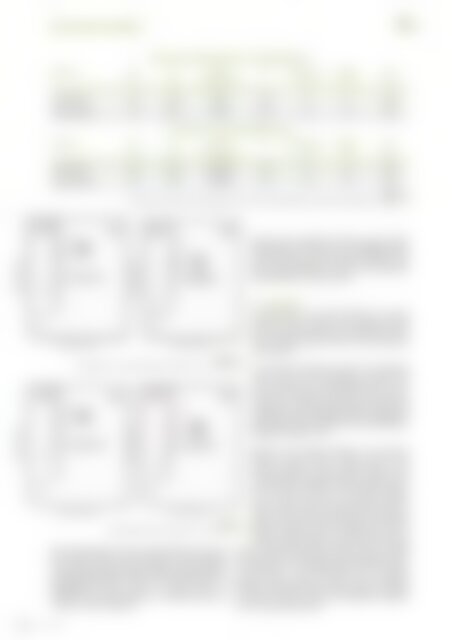atw - International Journal for Nuclear Power | 2.2024
Internationale Entwicklungen und Trends
Internationale Entwicklungen und Trends
You also want an ePaper? Increase the reach of your titles
YUMPU automatically turns print PDFs into web optimized ePapers that Google loves.
Environment and Safety<br />
65<br />
ART Values <strong>for</strong> Westinghouse 3-loop RPV Nozzles<br />
Material<br />
IRT<br />
(°F)<br />
CF<br />
(°F)<br />
Fluence<br />
(1×10 19 n/cm²)<br />
FF<br />
Delta RT NDT<br />
(°F)<br />
Margin<br />
(°F)<br />
ART<br />
(°F)<br />
Inlet Nozzle -30 26.0 0.0116 0.12 3.1 3.1 -23.8<br />
Outlet Nozzle -70 65.6 0.0116 0.12 3.1 3.1 -54.2<br />
ART Values <strong>for</strong> OPR-1000 RPV Nozzles<br />
Material<br />
IRT<br />
(°F)<br />
CF<br />
(°F)<br />
Fluence<br />
(1×10 19 n/cm²)<br />
FF<br />
Delta RT NDT<br />
(°F)<br />
Margin<br />
(°F)<br />
ART<br />
(°F)<br />
Inlet Nozzle -60 20.0 0.00998 0.11 2.2 2.2 -55.6<br />
Outlet Nozzle -50 20.0 0.00998 0.11 2.2 2.2 -45.6<br />
Tab. 7.<br />
Calculation of ARTs Values <strong>for</strong> Westinghouse 3-loop and OPR-1000 Reactor Vessel Nozzle Materials at 48EFPY<br />
Based on the comparison of the nozzle P-T limit<br />
with beltline P-T limit curves from (Figs. 10~11),<br />
inlet and outlet nozzle P-T limit curves <strong>for</strong> cooldown<br />
and steady-state transient are all bounded<br />
by the beltline P-T limit curves.<br />
Fig. 10.<br />
Westinghouse 3-Loop RPV Nozzle and Beltline P-T Limit Curves<br />
5. Conclusion<br />
In this paper, the neutron fluence at reactor<br />
pressure vessel nozzle were evaluated using<br />
Ex-vessel neutron dosimetry (EVND) and surveillance<br />
capsule monitor close to reactor pressure<br />
vessel nozzle.<br />
To verify the evaluation results, best estimated<br />
result values from surveillance capsule and<br />
Ex-vessel neu tron dosimetry(EVND) were compared<br />
with transport calculated value and the<br />
comparison results meet the range of ±20% of the<br />
acceptance criteria applied when comparing the<br />
best estimated and calculated values specified in<br />
Regulatory Guide 1.190.<br />
Fig. 11.<br />
OPR-1000 RPV Nozzle and Beltline P-T Limit Curves<br />
Both Westinghouse 3-loop and OPR-1000 results meet<br />
the range of ±20% of the acceptance criteria applied<br />
when comparing the measured and calculated values<br />
specified in Regulatory Guide 1.190. Neutron fluence at<br />
Westinghouse 3-loop nozzle is 1.39×10 17 n/cm2 at<br />
48EFPY and Neutron fluence at OPR-1000 nozzle is<br />
1.20×10 17 n/cm2 at 48EFPY.<br />
Based on the neutron fluence at the reactor<br />
pressure vessel nozzle, P-T limit curves <strong>for</strong> the<br />
reactor pressure vessel nozzle region were<br />
evaluated and compared with the P-T limit curves<br />
<strong>for</strong> the reactor pressure vessel beltline region.<br />
The P-T limit curves <strong>for</strong> the reactor pressure<br />
vessel nozzle region were bounded by the P-T<br />
limit curves <strong>for</strong> reactor pressure vessel beltline<br />
region. In general, the neutron fluence at reactor<br />
pressure vessel nozzle is smaller than that of<br />
reactor beltline region. However due to the high<br />
stress in nozzle corner, the P-T limit curve <strong>for</strong> nozzle<br />
may become more limiting than that of beltline region.<br />
In conclusion, it is recommended that the reactor<br />
pressure vessel nozzle P-T limit curve evaluation<br />
should continuously be per<strong>for</strong>med in order to confirm<br />
if nozzle P-T limit curves are bounded by beltline<br />
curves during the plant life.<br />
Vol. 69 (2024)
















